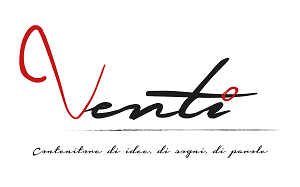The rapid spread of Covid-19 has involved all fields of human existence. As we found ourselves living a parallel life spending our days connected to the internet, looking for the latest news has become our primary aptitude.

People are overwhelmed by an avalanche of news and witnessing an exponential growth of articles written about the Covid-19 virus. During a crisis, communication by authorities and media has a substantial impact on people’s behaviour. There is an increasing curiosity about scientific issues, as well as a desire to understand difficult topics. People want to know what to do and how in order to protect themselves and their families.
The Policy Research Programme Reviews of the National Institute for Health Research (UK) has collected articles published by scientific journals. Before January, the virus was present but silent, and so was the media on this topic. In a short time, this became a general topic and object of scientific analysis.
It is estimated that around fifty scientific articles have been published per day.
However, generally, most information tends to be confusing, inconsistent and not always real.

The new term that has been created to address this phenomenon is “infodemic”. It refers to disseminating news alongside the Covid-19 pandemic and used by the World Health Organization’s General Director, Tedros Adhanom, to emphasize the damage of incorrect information in global crisis management.
Additionally, publish or perish is an aphorism used to emphasize the pressure to publish academic work to succeed in the academic career that may explain the relationship between the epidemic curves and the profit deriving from new reports.
Lots of headlines report news about “science-fiction” treatment. They talk about injecting disinfectant or eating sea lettuce to prevent you from getting Covid-19. And also, holding your breath for ten-second to test for CoV-2.

A high criticism is that many myths about SARS-CoV-2 seem to be politically and commercially motivated. They make us think that the pandemic virus either escaped from the Wuhan Institute of Virology in China or was a bioweapon it was created deliberately in the country. Moreover, some reports about drugs used to treat affected people leaked even before their success, and before the safety of administration was verified.
There are only a few articles about quantitative case data on patients, risk and transmission: the majority counts commentary articles without significant numbers.
This trend was only justifiable during the first months of the pandemic, but now, why do they still prefer to comment without any factual evidence?
If scientists need time to research in order to come to correct conclusions in their papers, during a period of pandemic crisis, as it has happened with SARS-Cov-2, decisions have been taken too abruptly. Thus, scientific studies’ preliminary results are often disseminated by newspapers, television, and on the internet.
For example, over the last months, many groups have been publishing in preprint, open-access platforms, such as BioRXiv and medRxiv. These kinds of publications typically are released without a peer-review process because it can be too slow to satisfy the urgency that the news entails.

On the one hand, fast publishing has the advantage of offering help to research and makes it possible for scientists to have access to new knowledge as soon as it is gathered by other colleagues all over the world: it speeds their work. On the other hand, this liberalization of scientific data without a peer review creates confusion. Experts often cannot help a lot. Indeed, some of these studies were withdrawn a few days after they were published.
The reliability and speed of scientific publications are important now: research has influenced governments’ political decisions at the national and international levels. But publishers of scientific journals are favouring speed rather than rigour of publication.
Perhaps, in post-academic science, scientists are interested in those problems relevant to States and businesses or want more social support and visibility, like being interviewed by social media. Still, it is not certain that their studies’ results are published at the same speed of their interviews. According to their specific competence and point of view, they can be tempted to unintentionally pass off their own opinion as scientific truth.
During SARS-Cov-2, the type of news is mainly crisis and risk communication, still a type of scientific communication that needs adhesion to reliable sources. Unpreparedness can be dangerous. Misleading communication can drive unwanted behaviours and generate a widespread concern about its effect on the public order and the long-term impact on lifestyle.
Have scientific publications been supervised properly? A negative answer can have the contrary effect and this can feed bewilderment and mistrust towards science but also having an impact on how people react to the virus’s spread.
If communication should only be based on scientific articles and data, scientific rigour is the pillar that keeps essential social and ethical responsibility towards society.
Leading transparent communication in times of uncertainty is the new challenge.
It seems essential for all the media channels to have a communication plan in place with transparent objectives before making any statement, to consult the scientific work in written form and, if possible, to compare different sources.
Therefore, it is exactly in times like these that good quality scientific communication is needed.
Classe ‘96, laureata in Biologia all’UniCAL, è rappresentante di dipartimento. Sognatrice dalla vena poetica, racconta il mondo con fotografie e testi. Ama perdersi nei tramonti, cieli immensi: lì dove è lecito allontanarsi dalla realtà.


